Welcome to the ultimate guide on How to Season Cast Iron. Whether you've purchased a new skillet, inherited an old one, or want to revitalize your current one, proper seasoning is crucial to ensure its longevity.
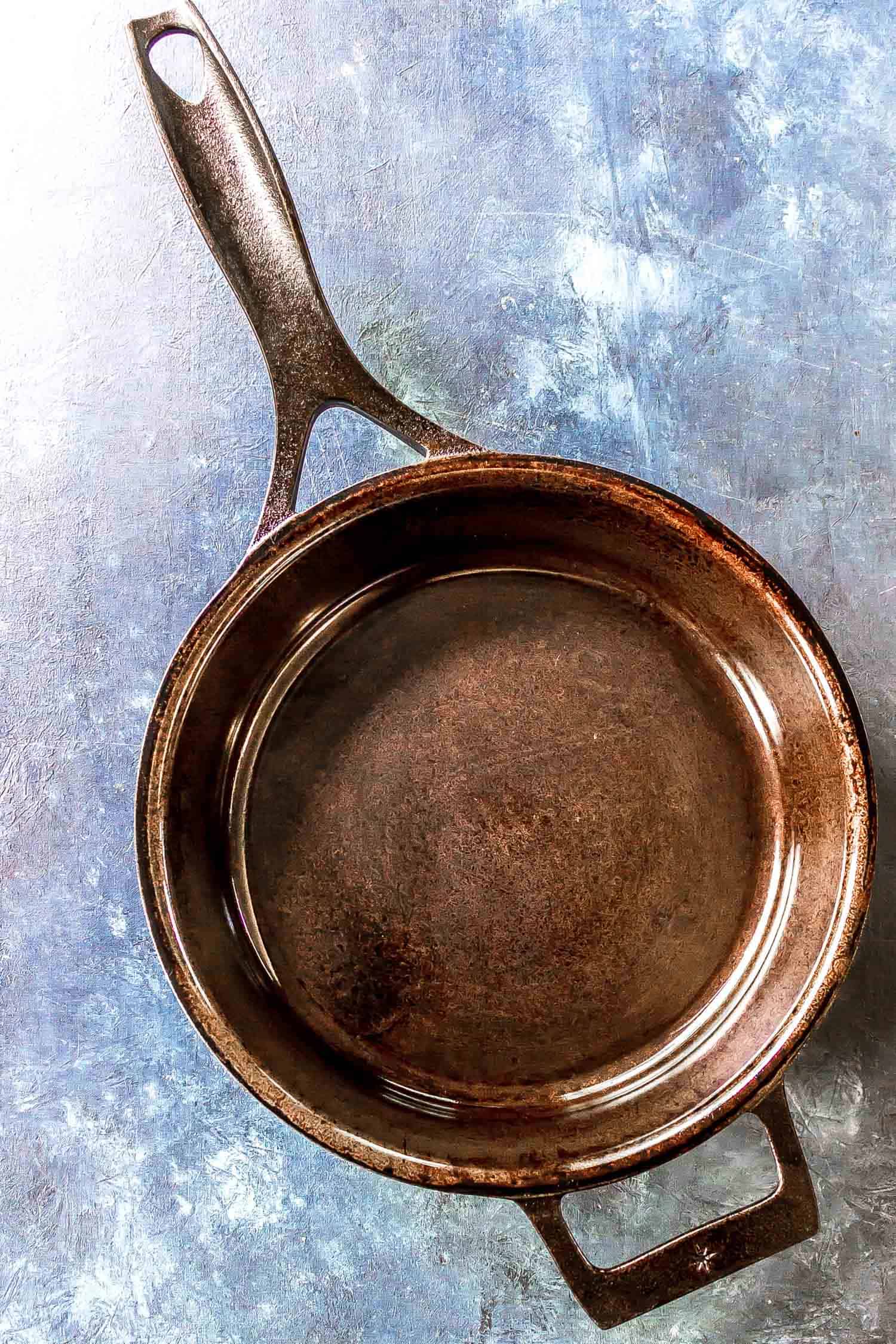
We've collaborated with Stargazer Cast Iron, a leading cast iron skillet company, to bring you these valuable insights.
Jump to:
What does "seasoning the cast iron" mean?
Seasoning a cast iron skillet or pan means applying a thin layer of oil or fat to the cooking surface and heating it to create a protective, non-stick coating. This process helps prevent rusting, improves the skillet's cooking performance, and gives it a smooth, black finish. It's a crucial step in maintaining and using cast iron cookware effectively.
🍳 Why is it important to season your cast iron?
How to season a cast iron skillet: step-by-step guide
- Check if you have a brand-new cast-iron skillet or an older one needing re-seasoning. New skillets usually come pre-seasoned, so washing with warm, soapy water is the only time to use soap.
- For older skillets or ones that haven't been used in a while, scrub away any rust or stuck-on food. Use steel wool or an abrasive pad to remove stubborn residues.
- Preheat your oven to 200°F (90°C) to prepare for the seasoning process. Make sure your skillet is completely dry before proceeding with the seasoning method.
- Put the dry skillet in the preheated oven and let it sit for 10 minutes. After 10 minutes, raise the oven temperature to 450°F (230°C) to initiate the seasoning process.
- Take the skillet out of the oven and apply a thin layer of oil all over the surface with a clean rag or paper towel. Flaxseed oil is the best oil for seasoning cast iron, but any heat-stable cooking oil will work.
- Allow the oil to soak into the iron for a few moments, then wipe away any excess. This step prevents excessive smoke in your kitchen during the seasoning process.
- Place the skillet upside down in the 450°F (230°C) oven for an hour. This high heat helps the oil to polymerize, forming a durable protective coating.
- After an hour, carefully remove the skillet from the oven.
- Allow it to cool for a few minutes on a heat-safe surface.
- Repeat the seasoning process 2-3 more times for optimal results.
How to take proper care of cast iron skillet?
Caring for your cast iron skillet is essential to maintain its performance and longevity. Follow these steps to ensure your cast iron remains in top-notch condition for years to come:
Proper storage and care
Caring for your cast iron skillet doesn't end with cleaning and seasoning. Follow these essential tips for proper storage and care to ensure it remains in pristine condition:

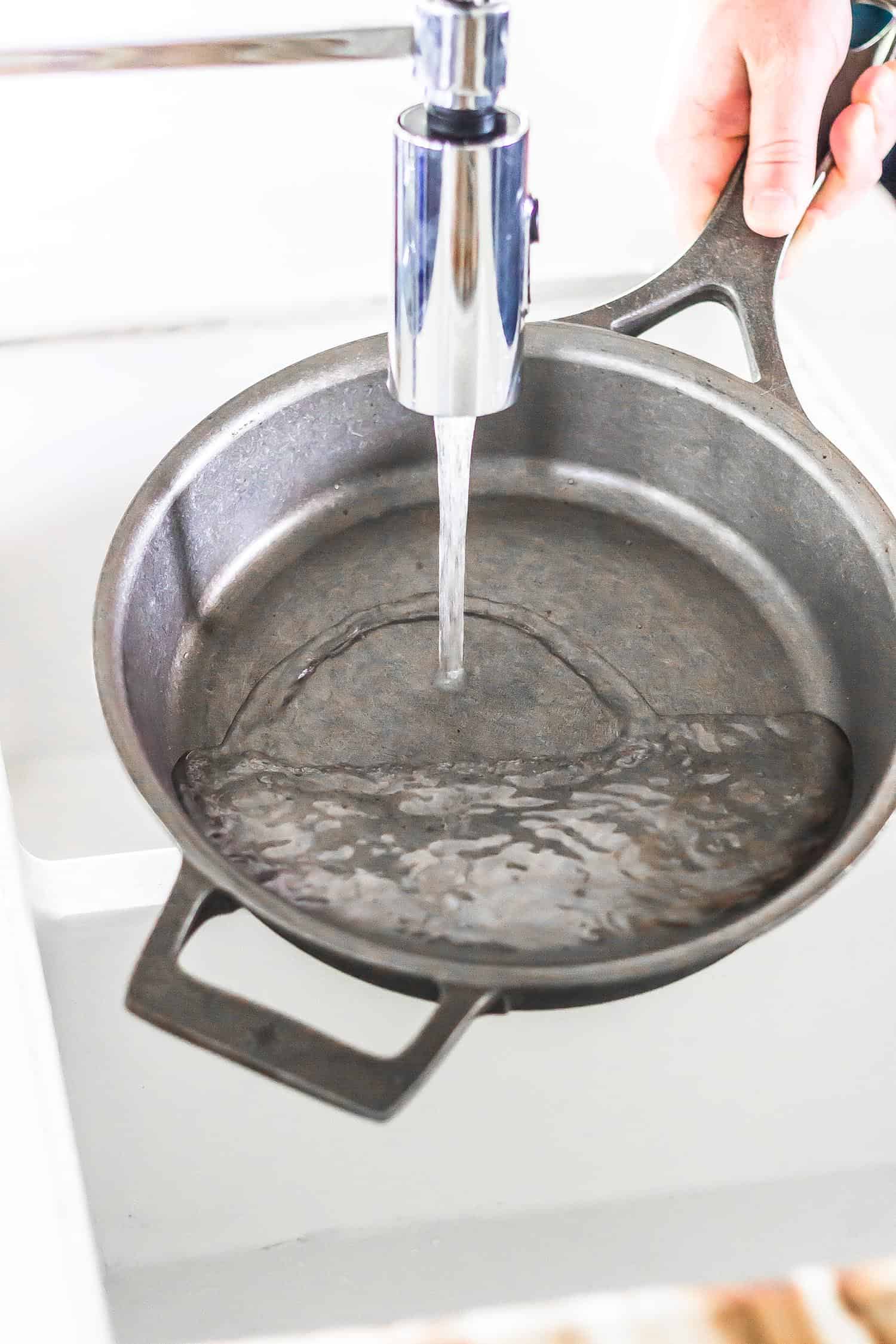
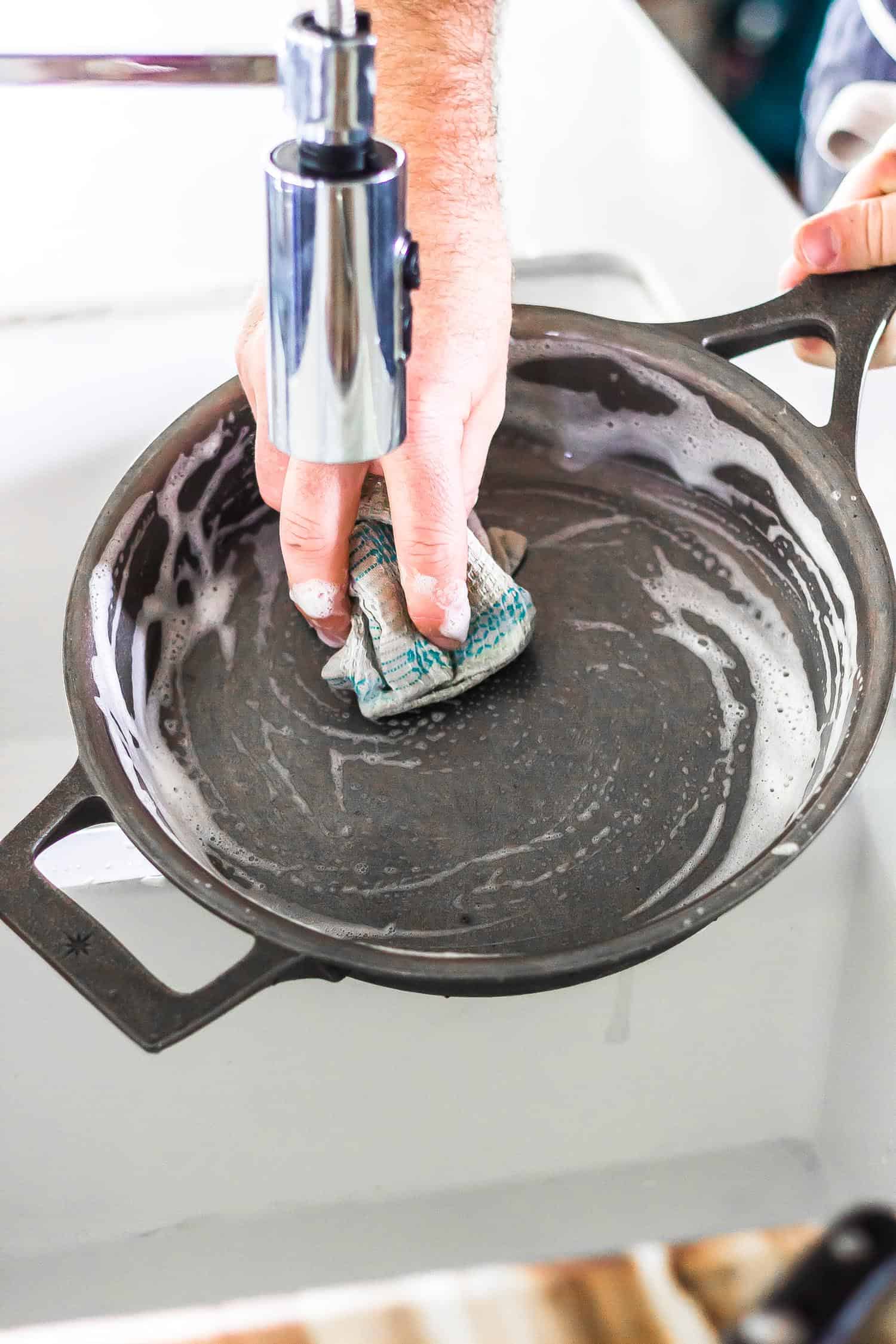
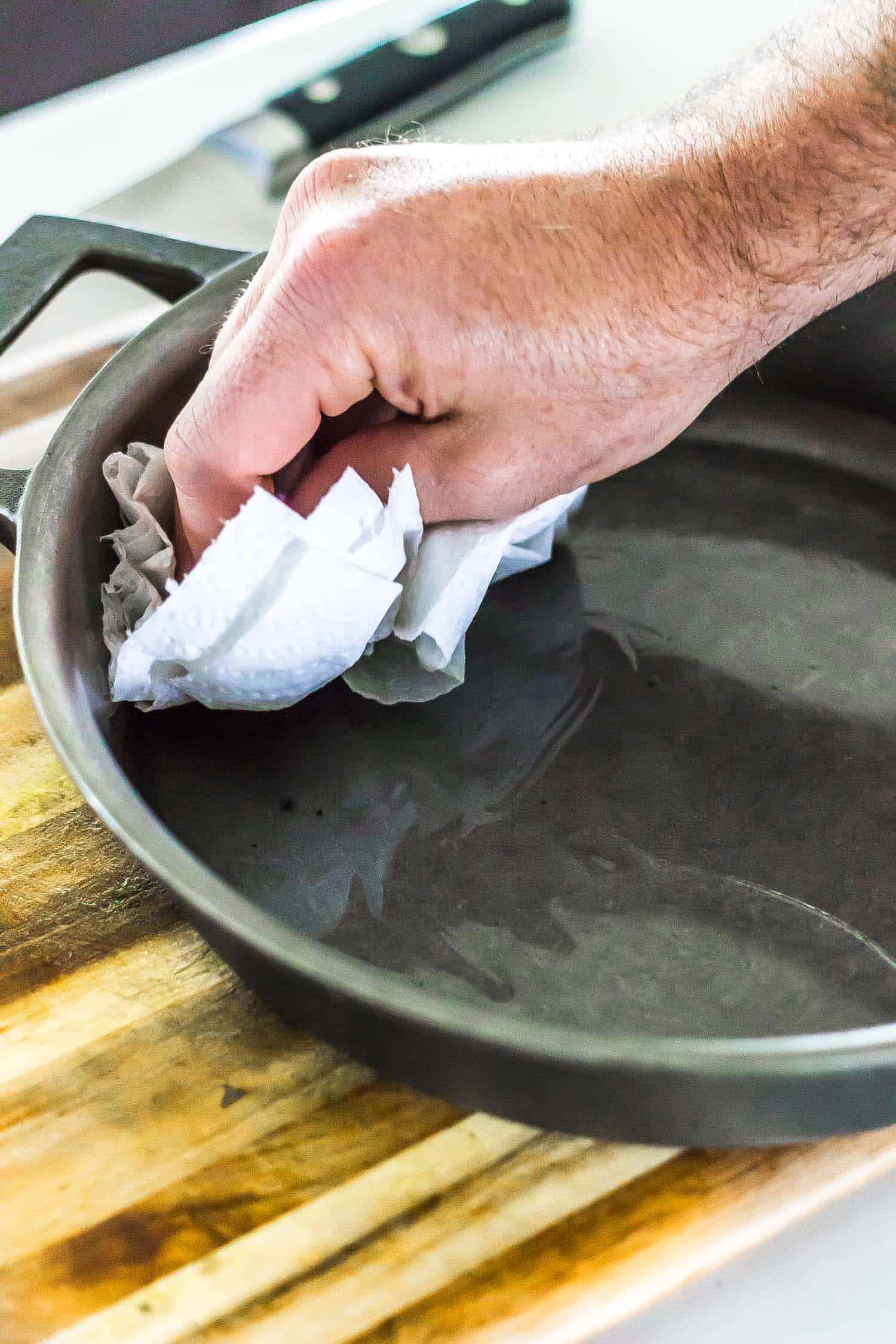
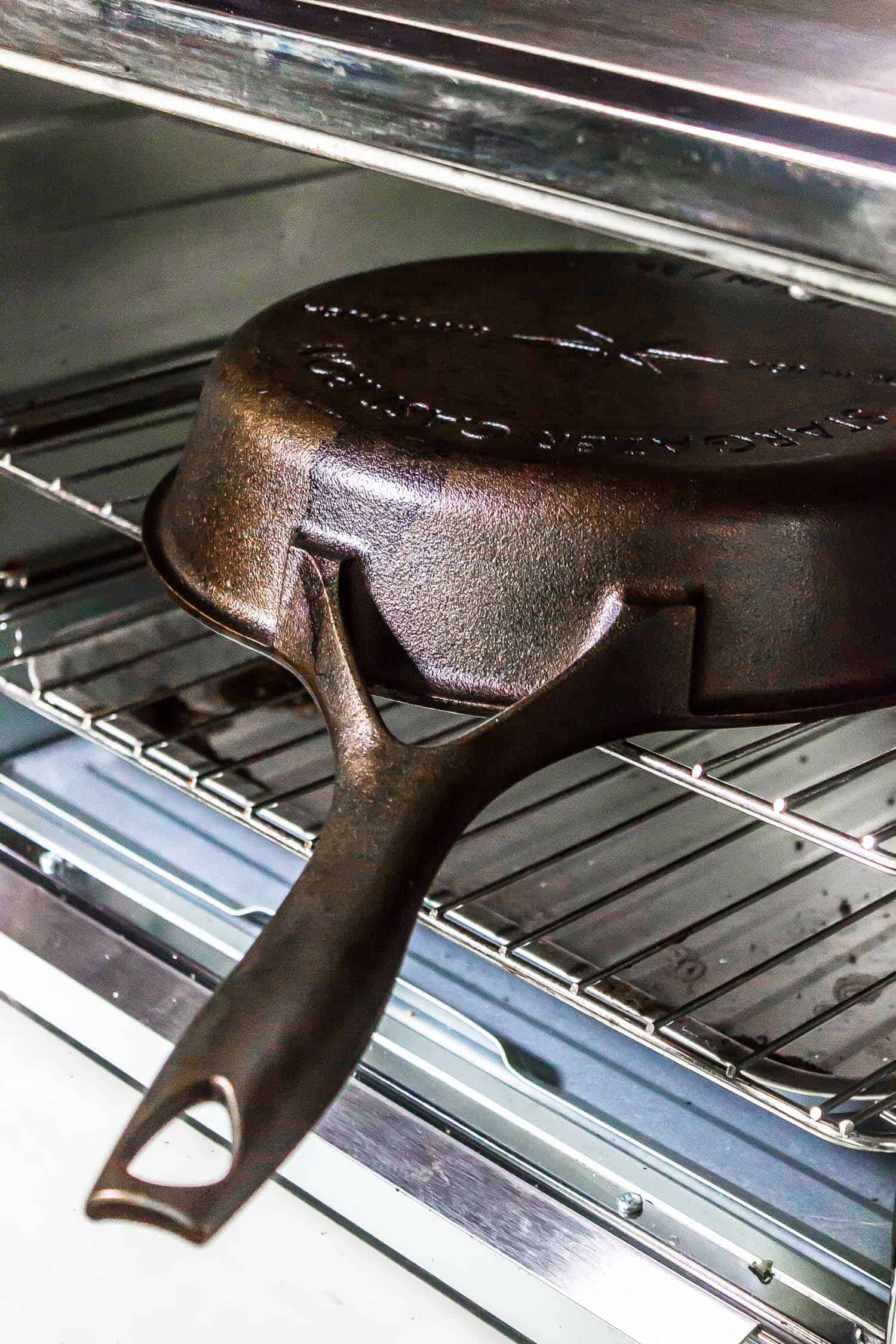
Jan Coleman says
I was always told to simply wipe out my skillet between us and not to use water or soap? Thoughts?
Alex Lester says
Definitely no soap after the initial seasoning, after that just water and a stiff brush if needed.
Sharon K. Connell says
That was the way my mother taught me to season cast iron pans and pots. We also always dried them in the oven after washing each time it was used, and reseasoned the pan inside occasionally. Love cast iron.
Kelly says
When I dry my skillet with a towe, the towel turns black. Is this supposed to happen?
[object Object] says
What size skillet are you using for these recipes?
Alex Lester says
Most recipes list what size skillet, mostly 10.5" but for desserts it's an 8" or 6"
Maria says
Such a great article !!! Does a cast iron need to be cleaned like that this every time it’s being used ? I make dinner around 6pm and I definitely would like to make if there’s a quicker way to clean the pan
Alex Lester says
After use you'll just want to rinse off the food and add a bit of oil if the skillet seems dry. Hope this helps!
Eva Lovasco says
I love your site!
I impulse-purchased a mini cast iron skillet and pot (Dutch oven style I think?) from Bed Bath and Beyond, then realized I had no idea how to care for it! Yikes! Your site has been great! 🙂
Quick question though, when I clean the skillet afterwards (I've made steaks 3 times! Yum 🙂 ), I've noticed the inside corners seem slightly less black than the rest of the skillet. Am I scrubbing too hard with my sponge? Do I need to put extra oil there? Am I cooking wrong?
Alex Lester says
Hi Eva! It can take awhile for a new skillet to "break-in" per se. I would wipe it down with a very thin layer of flax oil a few times, wiping off the excess with a clean dish towel then baking at 450° F upside down for 1 hour. After a few times those edges should be just as seasoned as the rest of the skillet. Hope this helps!